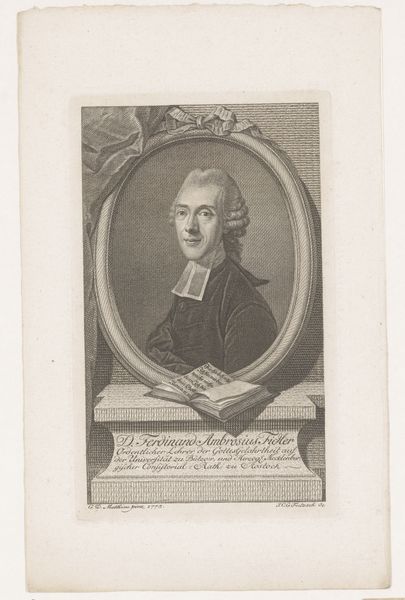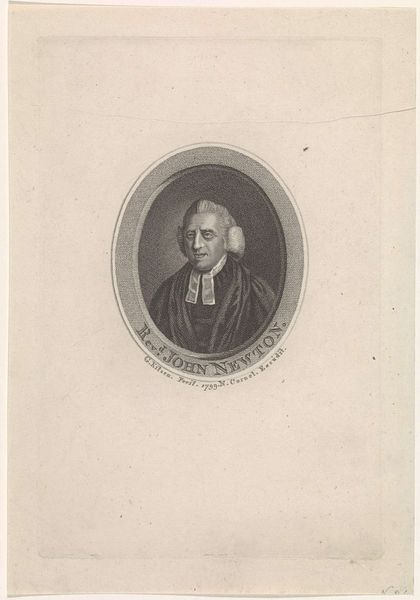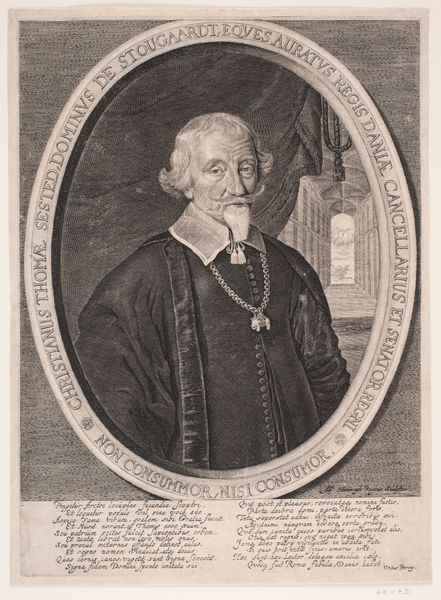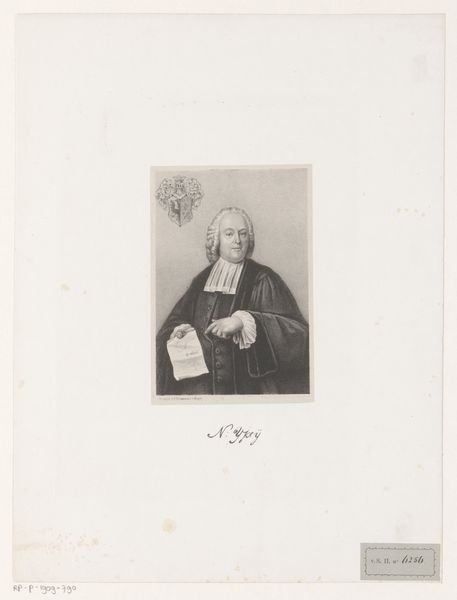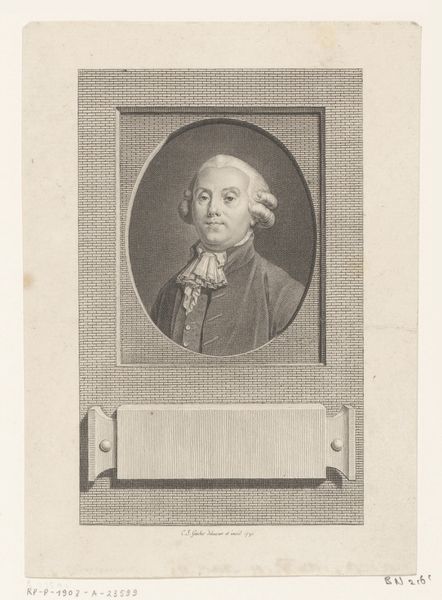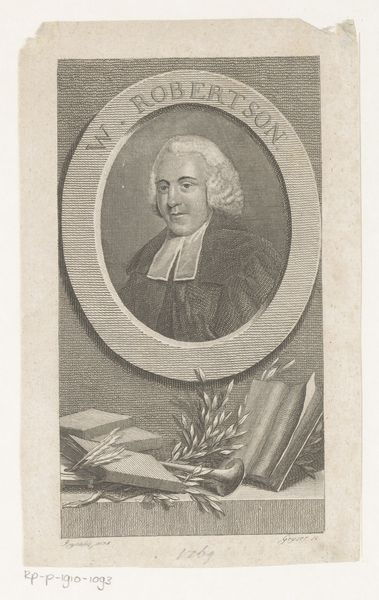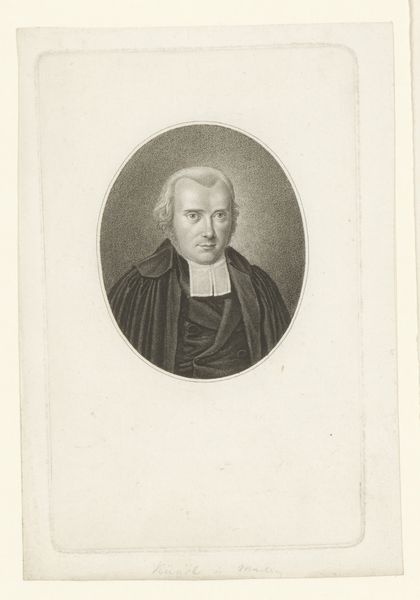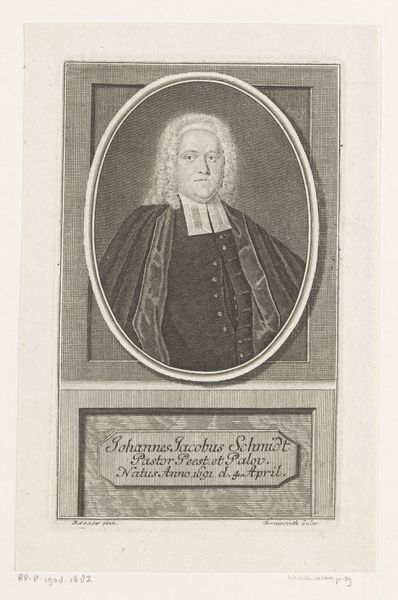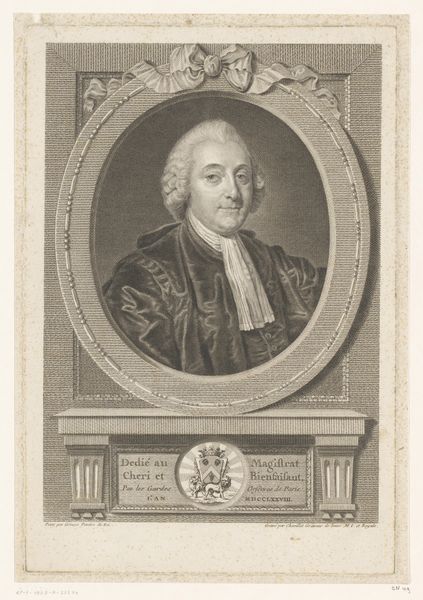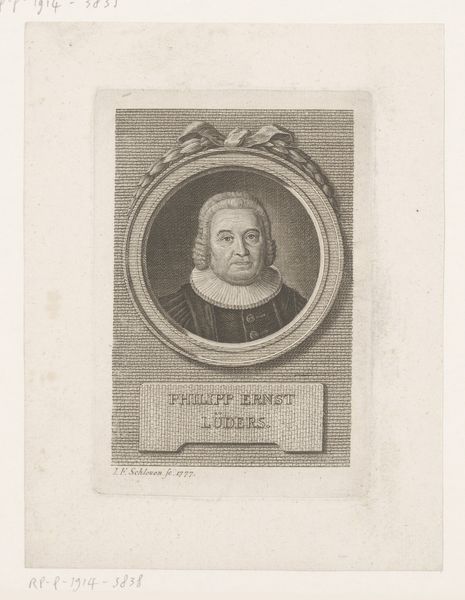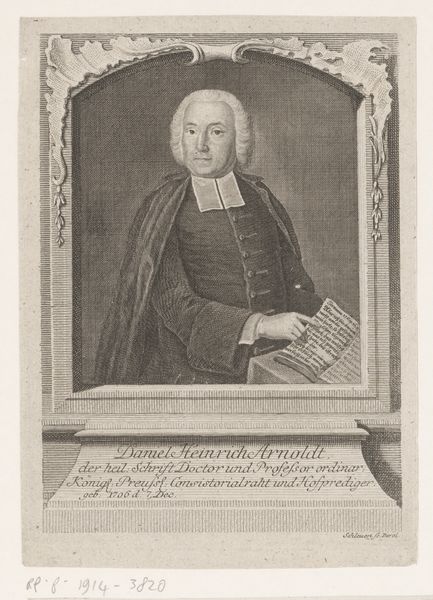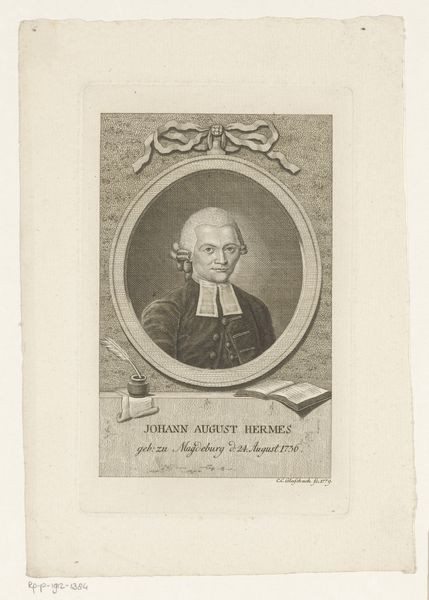
print, engraving
#
portrait
#
print photography
#
neoclacissism
# print
#
history-painting
#
academic-art
#
engraving
Dimensions: height 378 mm, width 247 mm
Copyright: Rijks Museum: Open Domain
Curator: The etching before us is titled "Portret van Johann Friedrich Burscher" by Friedrich August Brückner. It dates roughly between 1795 and 1814, crafted in the Neoclassical style, quite common for portraits of the era. Editor: Immediately, I’m struck by the severe elegance of the piece. The oval frame almost isolates him in history, yet there’s something intensely human in his gaze. A real person. Curator: The frame within a frame does lend a sense of importance, doesn't it? Look at the details of his garb, it tells you something. It is like looking into an important window to his world and time. Editor: Indeed! That distinctive white collar suggests a clergyman, reinforced by the medallion. What does it depict? I think its iconography reflects his affiliation and standing within the religious community. A testament to his belief in spiritualism and the influence in earthly matters. Curator: I suspect it denotes a particular order or society. Below, the shield with coat-of-arms likely further connects Burscher to a family or professional lineage. The piece becomes this puzzle of status markers. It also grounds it to something deeper, and, dare I say it, something far less pompous. Editor: You’re right. It becomes intensely revealing; perhaps it suggests how he wanted to be perceived—stately, intelligent, trustworthy. Even though the stark lines are clear cut, is there an essence of sensitivity? I think this tension gives it resonance. Curator: It seems so—look how Brückner delicately handled the face, particularly the subtle rendering around the eyes, that provides it depth. The choice to focus on detail, even in an age favoring broader strokes is telling. It reveals perhaps Burscher's own appreciation for nuance. Editor: Precisely. Beyond mere representation, it flirts with character, with personality. He seems…wistful, even beneath the officialdom. It whispers of the individual against the grand backdrop of societal roles. What are we looking at beyond social projection? Curator: Which makes one ponder the function of such portraits beyond mere record-keeping. Did these serve to truly preserve memory, or to sculpt it? We are only ever partially represented to another’s lens, aren’t we? A great reflection of mortality. Editor: Indeed, this image leaves me with more questions than answers, the best kind of art always does. A portrait serving as a mirror, not just for the sitter, but also for ourselves.
Comments
No comments
Be the first to comment and join the conversation on the ultimate creative platform.

